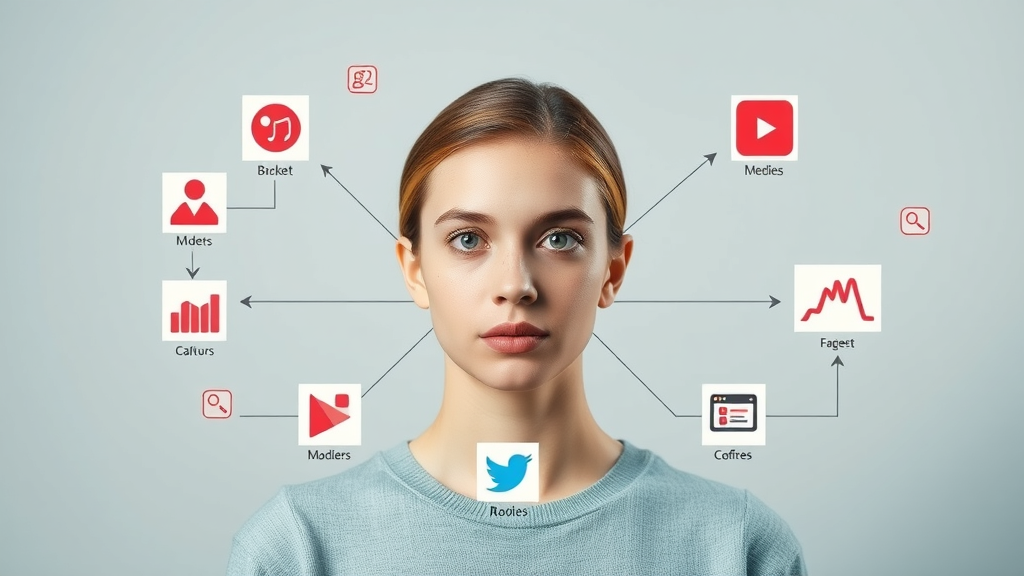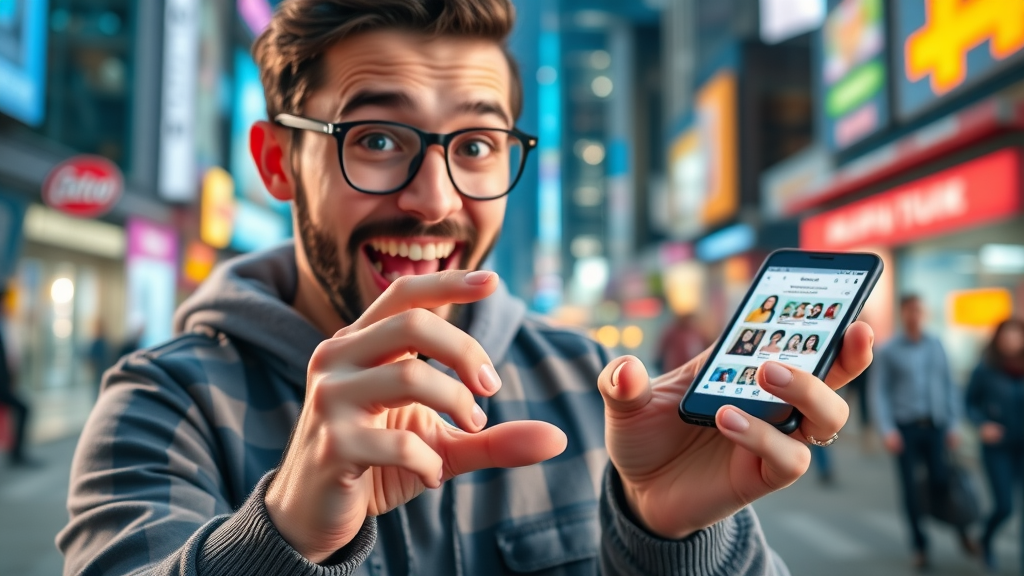Did you know the average internet user is bombarded with over 4,000 ads every day? Social media paid ads are silently competing for your audience’s attention—right now. Whether you’re launching a new product, building brand awareness, or trying to drive conversions, understanding how paid social media advertising truly works can mean the difference between spectacular success… or painful, wallet-draining disaster. In this comprehensive guide, we’ll reveal the actionable strategies, hidden pitfalls, and essential best practices every marketer and business owner needs to make their next social media ad campaign perform—and pay.

A Shocking Look at Social Media Paid Ads: Why Every Business Must Care
"On average, internet users are exposed to over 4,000 ads daily, shaping purchasing decisions and brand loyalty at scale."
Social media paid ads are no longer reserved for big brands with massive budgets. Every business—from local stores to global enterprises—faces the same digital reality: Your customers are spending hours on social media platforms, and competitors are meeting them there with targeted, compelling media ads. Ignoring paid social is not just risky; it’s a recipe for irrelevance. The surge of paid social media advertising is partly driven by platforms lowering organic reach and the unprecedented efficiency of audience targeting capabilities. Failing to make paid media part of your digital marketing stacks the odds in competitors' favor.
The truth is, a strategic media ad can instantly put your product or service in front of the exact audience most likely to convert. With options ranging from Facebook ads to TikTok video ads, businesses invest in paid ad campaigns to achieve everything from brand awareness to direct sales. But with so many choices, fast-changing ad formats, and evolving best practices, it’s easy to waste budget, miss opportunities, and fall behind. That’s why a data-driven, methodical approach to paid social media is now mission-critical. In this guide, learn how to harness every key advantage of social media advertising—before your competitors do.
While mastering the fundamentals is essential, even a single oversight in your social media paid ads can have costly consequences. For a closer look at the most common—and expensive—pitfalls to avoid, explore this in-depth breakdown of critical mistakes in social media paid advertising and how to safeguard your campaigns.
What You'll Learn About Social Media Paid Ads
- Core concepts of social media paid ads, paid social, and social media advertising
- Steps for setting up high-performing media ads across top platforms
- Expert tips to maximize ROI on paid media and paid social campaigns
- Audience targeting, ad format selection, and optimization best practices
- Common pitfalls—and how to avoid costly social media ad mistakes

Understanding Social Media Paid Ads: Definitions and Core Concepts
What Are Social Media Paid Ads?
Social media paid ads are promotional messages that businesses pay to display on social media platforms, targeting specific audiences. Unlike organic posts, paid ads are designed to reach beyond your existing followers, leveraging algorithms, targeting tools, and budget settings for maximum reach and impact. These media ads are run as part of a comprehensive digital marketing strategy, appearing as image ads, video ads, carousels, and stories—across multiple media platforms. The benefit? You gain measurable exposure, data-driven optimizations, and instantaneous feedback that organic social just can’t match.
When setting up a paid social campaign, you’ll choose your objective (brand awareness, traffic, leads, or conversions) and then select suitable ad formats aligned to your business goals. With platforms such as Facebook, Instagram, LinkedIn, and others, these ads are sold on auctions—meaning that proper budget allocation and bid strategies are central to ROI. In the ever-changing landscape of social media advertising, understanding how paid ads work—including cost models like CPM, CPC, and CPA—is fundamental to success.
Difference Between Social Media Advertising, Paid Social, and Paid Media
The digital advertising world can be confusing with its overlapping jargon. Paid social generally refers to all forms of paid promotion on social media platforms. Social media advertising is the act of placing media ads (including text, image, and video ads) on social networks to reach a larger audience. Meanwhile, paid media is a broader term that covers all channels where you pay to promote content—including display ads, paid search, programmatic ads, and of course, paid social media ads. Knowing these distinctions helps marketers build comprehensive ad campaigns that leverage each channel’s unique strengths for maximum business impact.
For instance, a good paid media strategy might include Facebook ads for community building, LinkedIn sponsored posts for B2B leads, and display banner ads across news sites for brand awareness. Paid ad effectiveness varies by platform, audience, and campaign objective, which is why a unified approach—understanding the differences yet capitalizing on synergies—delivers the highest ROI.
Why Paid Social Media Ads Have Become Critical for Brands
Social networks have steadily reduced the reach of organic posts, compelling brands to turn to paid social media advertising for visibility and engagement. Combining rich targeting options (interests, demographics, behaviors) with vast platform reach, paid social now enables brands—even startups and local businesses—to compete in the same digital landscape as global giants.
Furthermore, media advertising on social is data-rich. You gain not just branding, but also measurable results and learning potential for future ad campaigns. As customers increasingly rely on mobile and social platforms for discovery and decision-making, paid social ensures your brand is present at key moments. For anyone serious about digital marketing, paid media isn’t optional—it’s foundational.
The Social Media Paid Ads Landscape: Key Platforms and Their Strengths
Facebook Ads: Paid Social Powerhouse
Facebook ads set the benchmark for social ad platforms—offering sophisticated audience targeting, detailed analytics, and varied media ad formats. Virtually every business objective can be met within its ecosystem, from awareness to direct e-commerce sales. With billions of active users and robust campaign optimization tools, Facebook paid ads are a favorite for both large enterprise and small business marketers. The platform’s audience segmentation features ensure that your message reaches the right people at the right stage of the funnel.
With Facebook ad campaigns, you can experiment with video ads, carousel, and dynamic product ads, while using A/B testing to refine creative and delivery. The platform’s ad manager provides real-time metrics, letting you track spend, conversions, and ROI. To dominate modern digital marketing, Facebook’s paid social remains a top choice.

Instagram Ads: Visual Storytelling in Social Media Advertising
Instagram ads specialize in stunning visuals and seamless in-feed integration. As a mobile-first platform, Instagram excels with video ads, stories, image carousels, and now Reels. Brands leverage Instagram’s vibrant community to showcase products through aspirational content and influencer partnerships, fostering trust and engagement with younger audiences. Instagram ad formats align with consumer intent—whether inspiring, selling, or building loyalty.
Instagram’s paid social capabilities allow advanced targeting (by interests, locations, or lookalikes) and shoppable posts that streamline buying within the app. The synergy with Facebook’s Ad Manager means you benefit from deep data insights and cross-platform campaign control, making Instagram an essential component of any contemporary social media advertising strategy.
LinkedIn Ads: B2B Media Advertising Essentials
When it comes to B2B marketing, LinkedIn ads are the go-to media ad solution. The platform delivers exclusive access to decision-makers, industry professionals, and niche communities. Through sponsored content, InMail, and dynamic ads, LinkedIn enables brands to generate leads, promote events, and build thought leadership among a high-value audience.
LinkedIn’s targeting allows segmentation by job title, industry, company size, and even skill sets, facilitating business growth and nurturing professional relationships. For any organization focused on service sales or recruitment, integrating LinkedIn into your paid media mix is highly recommended.
Other Paid Social Media Platforms (Twitter, TikTok, Pinterest, Snapchat)
Beyond Facebook and Instagram, several social media platforms offer distinctive value. Twitter ads can spark real-time conversations and trend influence. TikTok paid ads thrive on creativity and virality, using short-form video to connect with Gen Z and millennial consumers. Pinterest ads are effective for discovery and purchase intent, especially in lifestyle and e-commerce categories. Snapchat ads target younger audiences with playful interactive formats.
Choosing the right social platform depends on your audience, content style, and budget. Each excels in unique ad formats, bidding methods, and community engagement—making a multi-platform paid media approach essential for maximizing reach and relevance in today’s digital marketing ecosystem.
| Platform | Audience Reach | Avg. Cost (CPC) | Best Use Cases |
|---|---|---|---|
| 2.8B+ Users | $0.80 – $1.20 | Full-funnel campaigns, lead generation, e-commerce | |
| 1.4B+ Users | $0.70 – $1.00 | Brand awareness, influencers, visual products | |
| 875M+ Users | $2.00 – $6.50 | B2B lead generation, hiring, professional events | |
| TikTok | 1B+ Users | $0.50 – $1.00 | Gen Z engagement, viral video content |
| 445M+ Users | $0.10 – $1.50 | Shopping, inspiration, lifestyle brands | |
| Snapchat | 600M+ Users | $0.90 – $1.80 | Young audiences, stories, interactive ads |
How Social Media Paid Ads Work: From Strategy to Launch
Defining Goals for Your Paid Media and Paid Social Campaigns
Successful media advertising starts with clear objectives. Are you aiming for more brand awareness, increasing website traffic, collecting leads, or driving direct sales? Defining your campaign goal upfront determines everything—ad creative, targeting strategy, platform choice, and budget allocation. Without a defined goal, your paid ad spend can easily be wasted on vanity metrics that offer little tangible return.
Use SMART criteria (Specific, Measurable, Achievable, Relevant, Time-bound) to shape media ad objectives. For instance, “Grow online sales by 30% in the next quarter using Facebook and Instagram ads,” or “Capture 500 new email leads from a LinkedIn paid social campaign.” When each paid social media ad campaign aligns tightly with business goals, tracking and optimizing becomes both easier and far more effective.
Step-by-Step: Setting Up a Social Media Ad Campaign
Setting up an ad campaign involves several deliberate steps to ensure efficiency and maximize impact. First, select the optimal social media platform for your product or service. Then, configure your ad account, apply targeting criteria, and design creative that resonates with your audience. A strong paid media process includes testing various formats, scheduling ads for the right times, and allocating budget across each phase of the campaign.
In most ad managers (Facebook, LinkedIn, etc.), you build ad sets according to objectives—engagement, lead generation, conversions—and fine-tune settings per audience segment. A/B testing and clear performance tracking allow for continual improvement, which translates to more conversions at lower costs. Diligent setup is the foundation for every successful paid social media ad campaign.
Ad Account Essentials and Budgeting
Your ad account is where all media ad activities are managed. It’s essential to verify account details, link payment methods, and set up business verifications as required by each platform. Next, establish your campaign budgets—either daily or lifetime—while keeping growth objectives in mind. Allocating budgets without tracking spend risks burning through resources without meaningful results.
Selecting the Right Ad Formats: Image, Video Ad, Carousel, and More
Each social media platform offers a spectrum of ad formats: single image, video ad, carousel (multiple images/videos in a swipeable unit), stories, and more. Your choice depends on your campaign goals and the story you wish to tell. For instance, carousel ads perform well for e-commerce brands showcasing different products, while video ads drive engagement and storytelling.
The right ad format can double (or triple) ad campaign performance, particularly when custom-tailored for the platform and audience. Understanding these differences enables brands to maximize paid social ROI.

Crafting Captivating Social Media Ad Creative
Compelling creative is at the heart of every high-performing paid ad. Use attention-grabbing visuals, concise copy, and strong calls-to-action. Align images or videos with your target audience’s aspirations and needs, and ensure all copy is clear, benefits-driven, and compliant with platform policies (such as restricted words or character limits).
Testing creative across multiple ad formats—such as single image versus video ads—lets you discover what resonates best and optimize accordingly. Never underestimate the impact of strong creative on paid social media ad campaign ROI.
Audience Targeting in Social Media Paid Ads
Understanding Your Target Audience for Maximum Media Ad Performance
Pinpointing your target audience is crucial for paid media effectiveness. Use a combination of first-party data (like CRM lists), platform insights, and third-party research to map out demographics, interests, and behaviors. Most social media platforms allow you to define key attributes—age, gender, location, interests, purchasing habits—ensuring your social ads are seen by those most likely to engage.
Segmenting audiences enables you to deliver personalized messages at scale, increasing media ad relevance and boosting conversions. Knowing your audience is the linchpin to every successful paid social campaign.
Interest, Demographic, and Behavioral Targeting in Paid Social Media
Platforms like Facebook, Instagram, and LinkedIn offer deep audience targeting options. Interest targeting reaches users based on their hobbies, likes, or followed pages; demographic targeting filters by factors such as education, income, relationship status, or profession; and behavioral targeting pinpoints actions—recent purchases, travel, device usage, etc.
Advanced advertisers blend these targeting layers for hyper-specific reach—showing tailored media ads to precise audience segments. This dramatically increases the chances of click-throughs, conversions, and ROI, allowing for data-driven optimization with each campaign.

Custom Audiences, Lookalikes, and Retargeting Across Social Media Platforms
Beyond standard targeting, custom audiences let you upload your own lists (email, phone, website visitors) to connect with known prospects. Lookalike audiences then identify new users sharing similar traits, expanding your reach to people with a higher likelihood to convert. Retargeting (or remarketing) lets you show ads to users who have previously interacted with your site, app, or content—boosting conversion rates by recapturing interested leads.
Effective use of these advanced targeting tools is a major competitive advantage for paid social advertisers. When thoughtfully combined and continually refined, they turbocharge the performance of any media ad campaign across platforms.
Social Media Paid Ad Formats: Choosing What Works
Image, Video, Carousel, and Stories: The Ad Format Breakdown
Not all ad formats are created equal. Image ads offer simplicity and broad appeal, especially for promoting single products or offers. Video ads drive engagement, storytelling, and instructional content. Carousels allow multi-product showcases in one swipeable unit for e-commerce, and stories harness full-screen, immersive engagement—perfect for flash sales, announcements, or behind-the-scenes brand moments.
Selecting the best format comes down to your objectives, product or service, and where your audience spends their time. For instance, brand launches often thrive with cinematic video ads, while retargeting performs well through direct-action image carousels. Constant testing and performance analysis reveal which mix of ad formats delivers the optimal results for each social media advertising campaign.

Optimizing Video Ads for Social Media Advertising Effectiveness
Video ads consistently outperform other formats in terms of engagement, watch time, and recall. Successful optimization starts with grabbing attention in the first 2–3 seconds, keeping branding clear yet non-intrusive, and aligning the message with platform norms (vertical for stories, square for feeds, etc.). Adding subtitles and calls-to-action further boosts video ad results, since many viewers watch on mute.
Continually test variations—length, style, CTAs—to optimize for conversion and engagement. By tailoring each video to the platform’s best practices and your defined target audience, paid social video ads become a high-ROI media advertising channel.
Budgeting and Bidding in Social Media Paid Ads
How Much Does a Paid Social Media Ad Cost?
Costs for paid social media advertising vary based on platform, competition, targeting specificity, and chosen ad format. Most platforms use auction models (CPC, CPM, CPA), which means prices can fluctuate daily. A typical Facebook ad might cost $0.80–$1.20 per click, while LinkedIn can reach $6+ per click for B2B audiences. Budget flexibility allows advertisers to spend as little as $5 per day or scale into multimillion-dollar campaigns.
The key to cost-efficiency is constant monitoring and optimization—adjusting bids, targeting, and creative to maximize ROI. Many brands find that using more narrowly defined audiences and optimized creatives delivers higher results at lower overall spend.
Factors Influencing Social Media Ad Pricing
The price you pay for media ads is the result of several variables: platform popularity (and competition), audience demand, ad relevance score, timing (seasonality, demand surges), and ad format complexity. Highly competitive niches (such as legal or finance) have substantially higher CPC/CPMs than general e-commerce or local businesses.
Platforms reward relevant, high-performing ads with lower costs. That’s why regular testing, A/B optimization, and precision targeting are key to stretching every advertising dollar.
Bidding Strategies for Cost Efficiency
Social ad bidding can be automatic (letting platforms optimize for lowest cost per result) or manual (setting precise max bids for your media ad campaign). Automated bidding is ideal for beginners, while experienced advertisers may use manual bidding to control CPMs for specific outcomes. Smart bidding strategies—like dayparting (showing ads only at peak engagement hours) and testing bid caps—can drive cost per result down while increasing ROI.
Whichever approach you choose, make sure to review results weekly and adjust as necessary—winning campaigns require constant attention in the dynamic environment of digital marketing and paid media.
| Platform | Avg. CPC | Avg. CPM |
|---|---|---|
| $0.80 – $1.20 | $7.00 – $10.00 | |
| $0.70 – $1.00 | $6.50 – $9.50 | |
| $2.00 – $6.50 | $27.00 – $50.00 | |
| TikTok | $0.50 – $1.00 | $5.00 – $10.00 |
| $0.10 – $1.50 | $4.50 – $7.00 | |
| Snapchat | $0.90 – $1.80 | $6.00 – $10.00 |

Measurement and Optimization: Getting Results from Social Media Paid Ads
Tracking Key Metrics: CTR, CPC, Conversion, and ROI for Paid Social
Knowing whether your media ad is working starts with tracking the right metrics: Click-Through Rate (CTR), Cost Per Click (CPC), Conversion Rate, and Return on Investment (ROI). CTR reveals how compelling your ad creative and targeting are; CPC shows what you’re paying for each click; conversion rate tracks leads or purchases; and ROI confirms your ad campaign profitability.
Use platform analytics dashboards for real-time insight, but supplement with external data (Google Analytics, CRM) for a complete view. Set KPIs based on your original objective, and use dashboards to spot and address underperforming campaigns fast—before wasted spend accumulates.
A/B Testing and Creative Optimization for Better Media Advertising
Continual improvement powers high-ROI media ads. A/B testing involves launching multiple versions of your ad (image, copy, CTA) to see which performs best against your target audience. Small tweaks (headline wording, GIF instead of still image, background color) can yield big gains in CTR and conversions.
Testing isn’t a one-time effort but an ongoing process. Rotate successful creatives and retire underperformers to avoid ad fatigue. Data-driven creative optimization is the quickest path to lower costs and higher effectiveness in every paid social media ad campaign.

Scaling Up Successful Paid Media Campaigns
When a media ad outperforms KPIs, it’s time to scale: increase budget, broaden audience targeting, and test new ad formats. But scaling requires care—sudden spikes in spend can cause costs to rise or performance to drop if not closely monitored. Use advanced segmentation and slow, steady budget increments to maintain results as campaigns grow.
World-class brands continually iterate, expand, and optimize their best-performing ads, using insights from smaller tests to power growth on a national or global scale. Thoughtful scaling is the true test of mastery in paid social media advertising.
Social Media Paid Ads Pitfalls and How to Avoid Them
- Ad fatigue and over-serving
- Ignoring audience segmentation
- Failure to test creative and formats
- Unclear campaign objectives
- Neglecting platform policy compliance
"Failing to properly optimize can lead to wasted budget and lost opportunities across your paid media campaigns."
Even seasoned marketers stumble over these common mistakes. Running the same creatives too long causes ad fatigue—audiences start ignoring your content, and CPCs rise. Broad or untargeted ad sets stretch budgets thin, while neglecting to split test creative leaves money on the table. Unclear goals produce random, unmeasurable outcomes. And ignoring platform rules can get your ads disapproved—or your account banned. Awareness, vigilance, and ongoing learning are your shields against disaster.
Key Trends and Future Directions in Social Media Paid Ads
The Role of AI in Paid Social Media Advertising
Artificial Intelligence is reshaping paid social with automated audience expansion, predictive creative optimization, and real-time bidding. Platforms now offer AI-powered campaign strategies that tweak targeting, ad placement, and even creative based on performance signals.
For advertisers, embracing AI-powered tools means higher efficiency and a competitive edge. Expect automation to continue transforming every aspect of media advertising, freeing brands to focus on strategy and creative rather than manual bidding and segmentation.

Emerging Formats (Shoppable, Interactive, Stories, Reels)
Today’s platforms are introducing dynamic new ad formats: shoppable ads (which let users buy straight from an ad), interactive ads for polls and games, and immersive format videos like Stories and Reels. These emerging formats help brands create two-way conversation, drive fast e-commerce conversions, and capture fleeting attention in a crowded digital space.
Staying informed—and testing these new options—gives your business a first-mover advantage in a rapidly-evolving paid social media advertising world.

People Also Ask: Common Questions About Social Media Paid Ads
How much does a paid social media ad cost?
The cost of a paid social media ad varies depending on the platform (Facebook, Instagram, LinkedIn, TikTok, Pinterest, etc.), audience specificity, and ad competition. On average, Facebook ads cost around $0.80–$1.20 per click, Instagram between $0.70–$1.00, and LinkedIn is typically more expensive (up to $6 or more per click). Your final cost per result depends on targeting precision, creative quality, and ongoing optimization. Small daily budgets are possible, but expect to scale spend as results improve.
What is the 5 3 2 rule for social media?
The 5 3 2 rule for social media content suggests that, out of every 10 posts: 5 should be curated from others (offers value, not self-promotion), 3 should be original content from your brand (educational, informational, or entertaining), and 2 should reveal your brand’s human side (personal stories or behind-the-scenes moments). This rule is mostly for organic social, but paid strategies can benefit by balancing value content with calls to action.
Do we really see 4000 ads a day?
While estimates vary, multiple studies suggest the average person is exposed to between 4,000 and 10,000 ads daily across all digital, social, and offline channels. On social media platforms, this overwhelming ad density makes it crucial to invest in creative, targeted, and well-optimized paid ad campaigns to earn any real audience attention.
Which social media platform is best for paid advertising?
The best platform depends on your audience, objectives, and resources. Facebook is the most versatile for broad demographic reach and various ad formats. Instagram excels at visual storytelling for younger audiences. LinkedIn is unbeatable for B2B and professional services. TikTok and Pinterest offer unique opportunities for trending topics, shopping, or discovery. The most effective approach is to test multiple platforms, analyze performance data, and invest most heavily where ROI is clear.
Expert FAQs on Social Media Paid Ads
-
What is the minimum budget for an effective paid social media ad campaign?
Most platforms allow campaigns to start at $5–$10 daily, but meaningful results often require a minimum of $500–$1,000 per month, depending on industry and objectives. -
How do I measure success with paid media advertising?
Success is gauged by key performance indicators (KPIs) like CTR, CPC, conversion rate, ROAS (Return on Ad Spend), and overall ROI, set in relation to your campaign objectives. -
Are social media paid ads better than organic social media strategies?
Paid social media ads offer rapid, scalable reach and precise targeting, while organic strategies build community over time. Both are essential for a balanced digital marketing plan. -
Can small businesses compete effectively with social media ads?
Yes—a well-targeted, creative, and data-driven approach lets small businesses achieve impressive results, even with limited budgets. -
What are the most common mistakes in social media advertising?
Lack of testing, weak targeting, ad fatigue, unclear objectives, and non-compliance with platform policies are leading mistakes that drain budget and reduce effectiveness.
Key Takeaways: What Every Marketer Should Remember About Social Media Paid Ads
- Always align social media paid ads with clear business goals
- Optimize targeting and ad formats for each platform
- Vigilantly monitor metrics to avoid wasted spend
- Constantly test and iterate creative for maximum ROI
- Stay current with emerging trends in paid media
Conclusion: Navigate Social Media Paid Ads with Confidence
Knowledge is your insurance against costly mistakes. Use the strategies above to launch impactful, agile social media paid ad campaigns, and watch your business grow.
If you’re ready to take your digital marketing to the next level, consider broadening your expertise beyond social media paid ads. Discover how to integrate display advertising, optimize across multiple channels, and boost your overall ROI by exploring proven strategies for revitalizing display advertising performance. By mastering both tactical and strategic approaches, you’ll position your brand for sustainable growth and outpace the competition in today’s fast-evolving digital landscape. Dive deeper and unlock advanced insights that can transform your entire paid media strategy.
Need Help? Call Digital Media Marketing at 1-586-997-0001.
For more information, read The Ultimate Guide to Paid Advertising: Strategies, Channels, and ROI-Boosting Tips.
 Add Row
Add Row  Add
Add 




Write A Comment